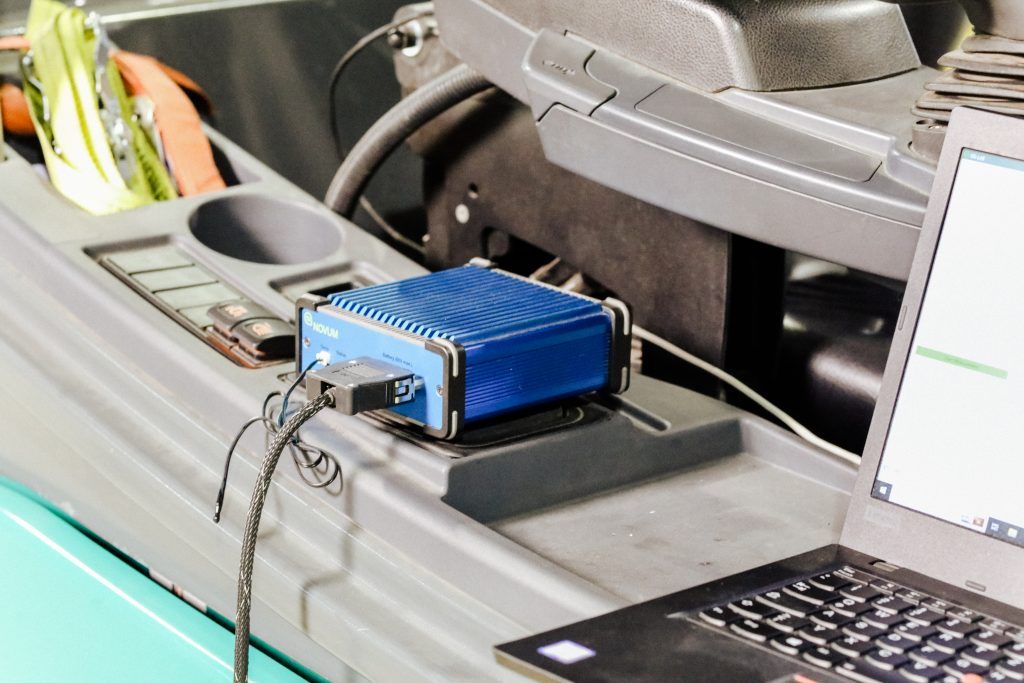A battery management system (BMS) is used to monitor and control the operation and performance of a battery. This mainly concerns the charging and discharging processes, the energy balance and the energy consumption. The BMS is also responsible for preventing overcharging of batteries and thus preventing overloading.
How is a battery management system structured?
A battery management system consists of various components that work together to provide effective monitoring and control of the battery. Depending on the manufacturer, model and requirement, they differ in size, quality and other factors. The following components are absolutely necessary for the BMS to fulfill its task:
- Voltage sensors: The sensors measure the voltage of the battery cells
- Current sensors: The sensors measure the current flowing into and out of the battery
- Temperature sensors: These sensors measure the temperature of the battery
- Battery management controller: The core of the BMS is responsible for processing the sensor data. The controller may also be connected to a display or interface that allows users to monitor or control battery performance
- Protection circuits: They protect the battery from overcharging, overdischarging and short circuits
- Communication interfaces: They communicate with other systems, such as NOVUM’s hardware and software.
- Battery balancer: It is used to balance the voltage of the individual battery cells within a battery in order to extend the life of the battery
Why does good battery management not replace AI-based online monitoring?
A battery management system is always designed to be reactive. That is, it responds to specific measurements that it collects. Good AI monitoring, on the other hand, works proactively. That is, it predicts future battery behavior. This requires significantly more computing power than in the cost-optimized battery management systems.
Many BMS also delete battery data after a certain time. In simplified terms, we can say that all the values collected by a battery management system are of course important, but they have significantly greater added value when processed with the help of artificial intelligence. This makes anticipatory battery operation possible in the first place.
For this, however, it is very important that the BMS collects a lot of good data. If, for example, a sensor is defective or individual values are deleted again after a certain time, this may not be recognizable to the AI and lead to incorrect results. At NOVUM, we reliably detect such cases through our guard AI and have a solution even for difficult cases.
If the data quality of the BMS is not sufficient, we simply add electrochemical impedance spectroscopy, a method from laboratory measurement technology, and thus get a non-invasive view into battery chemistry. This enables us to close data gaps and always achieve the desired added value.
Our customers can choose whether we use impedance spectroscopy as a plug-on NOVUM add-on to their systems or whether we slightly modify the BMS so that it can also perform our measurements.

Comparison: What information does a BMS vs. NOVUM’s AI provide?
Information that an average battery management system can provide:
- Voltage
- Current
- Temperature
- DC internal resistance
- Homogeneity and correct balancing of the cells
- Alarm in case of overcharging, overheating or defect
- State of Charge (mostly rather rough)
- State of Health (mostly based on cycle counts or laboratory models with the associated uncertainties).
- Capacity
- Energy throughput
Information provided by NOVUM technology:
- State of Charge (SoC, more meaningful than the BMS).
- Health status/wear status (State of Health, SoH, more informative than the BMS).
- (Residual) capacity
- Battery residual value
- Expected service life in current operating mode
- Expected lifetime in case of a change of the use case
- Cost-per-cycle
- Notes on possibilities for extending the service life of the batteries
- Replacement recommendations for modules 6 months before they fail
- Early warning of safety-relevant changes

The last point is particularly important for many of our customers. In terms of safety, it is crucial whether you rely on the information coming from the battery management system or not. Of course, AI-based safety monitoring is also possible on a purely software basis using the BMS data.
However, if you want to be absolutely sure, we generally recommend working with impedance spectroscopy, because in this way we can also detect safety-relevant phenomena at an early stage that would otherwise remain undetected (e.g. formation inhomogeneities, lithium plating or dentrite formation).
A simple BMS is definitely not capable of doing this. Companies that want to avoid outages or even a thermal runaway with risks such as fires and explosions at all costs should therefore take advantage of all the possibilities offered by modern AI-based battery monitoring.




